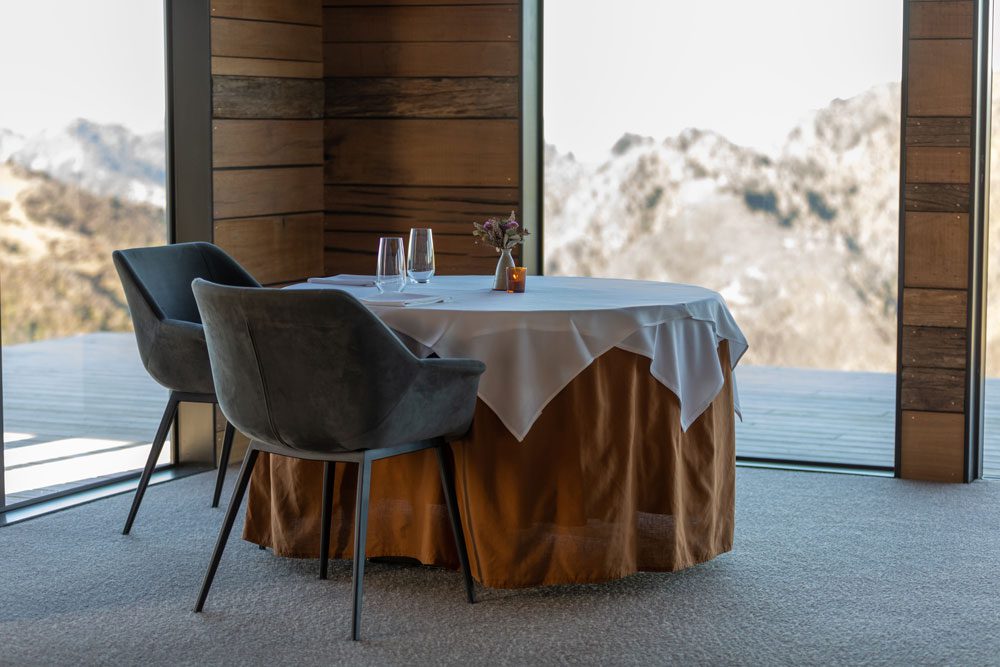I’m on the back of an ATV that’s speeding through a narrow farm track. We splash through puddles, dodge a few stray boulders and pull up to a steep ridgeline that peers out to native bush and to a meandering river below. “The river winds its way through this lost world, the magical rainforest,” says our guide. “It’s such a mystical place. There’s not a lot of virgin rainforest left in the North Island and we’re lucky enough to have this huge patch of it right at our doorstep.”
We continue past a field of beehives, a clearing of regenerating wetland, rolling paddocks of sheep and a historic farmer’s cottage. Two hours later, I’m sitting in an intimate 10-seat restaurant, sipping on fine wines and enjoying a 12-course degustation dinner.
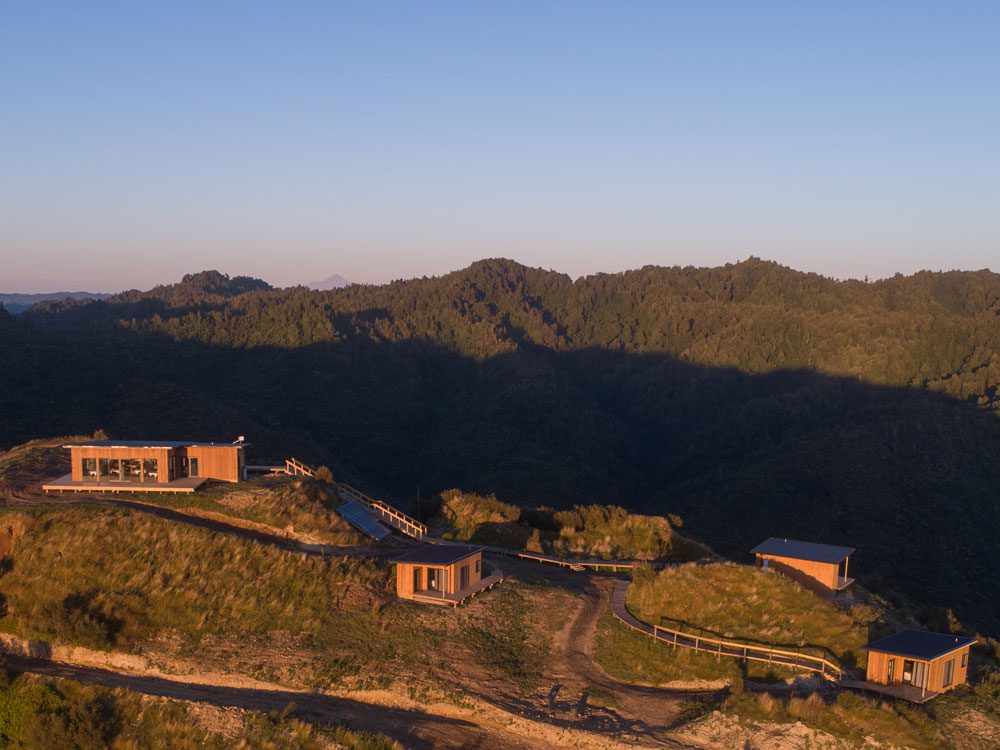
The restaurant is called The Chef’s Table and it’s located, according to affectionate discourse, at ‘the top of the world’. More specifically, it’s on a hilltop at the Blue Duck Station, a remote 2,900-hectare farm at the edge of Whanganui National Park.
Up here, it really does feel like you’re on top of the world. A storm has just passed through, making the off-road journey up here a thrilling and, at times, muddy one. Tendrils of mist float off the hills and a faint rainbow appears as sunlight pokes through the clouds. On a clear day, you can see all the way out to the nearby mountains, Taranaki, Ngauruhoe and Ruapehu.
“When you’re given a stage like this to perform on, you really have to make the most of it,” says Jack Cashmore, the chef and owner of this fine-dining destination restaurant. “That’s a mandate to me. When you’re given the best stage in the world, it’s up to us to match it and do justice with the dining experience that we offer.”
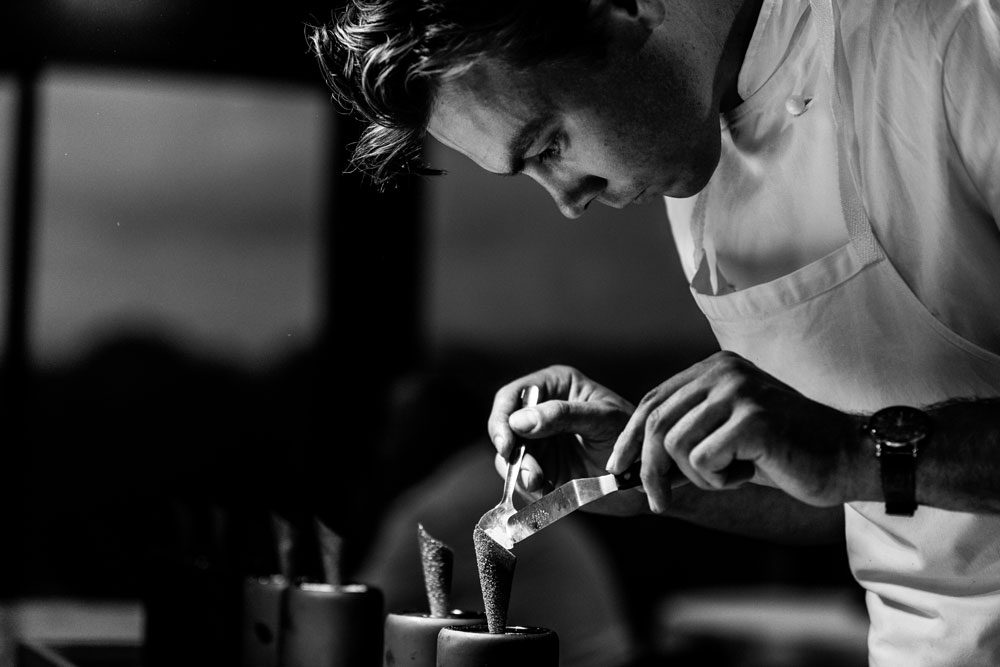
The dishes, wine and location are enough to make this dining experience unforgettable, but it is the added layers of story that turn it into a richer experience, and one unlike anything you’ll find in Aotearoa.
When we arrive at the restaurant after our two-hour bush safari – one of only two ways to get here (the other being via helicopter) – we don’t know anything about the food. It’s carte blanche, meaning Cashmore is given free rein on what to serve, relying solely on what’s fresh, seasonal and foragable. Beef, lamb and venison are sourced from the farm, vegetables from gardens around the station and neighbouring properties, and wild ingredients foraged from the bush.
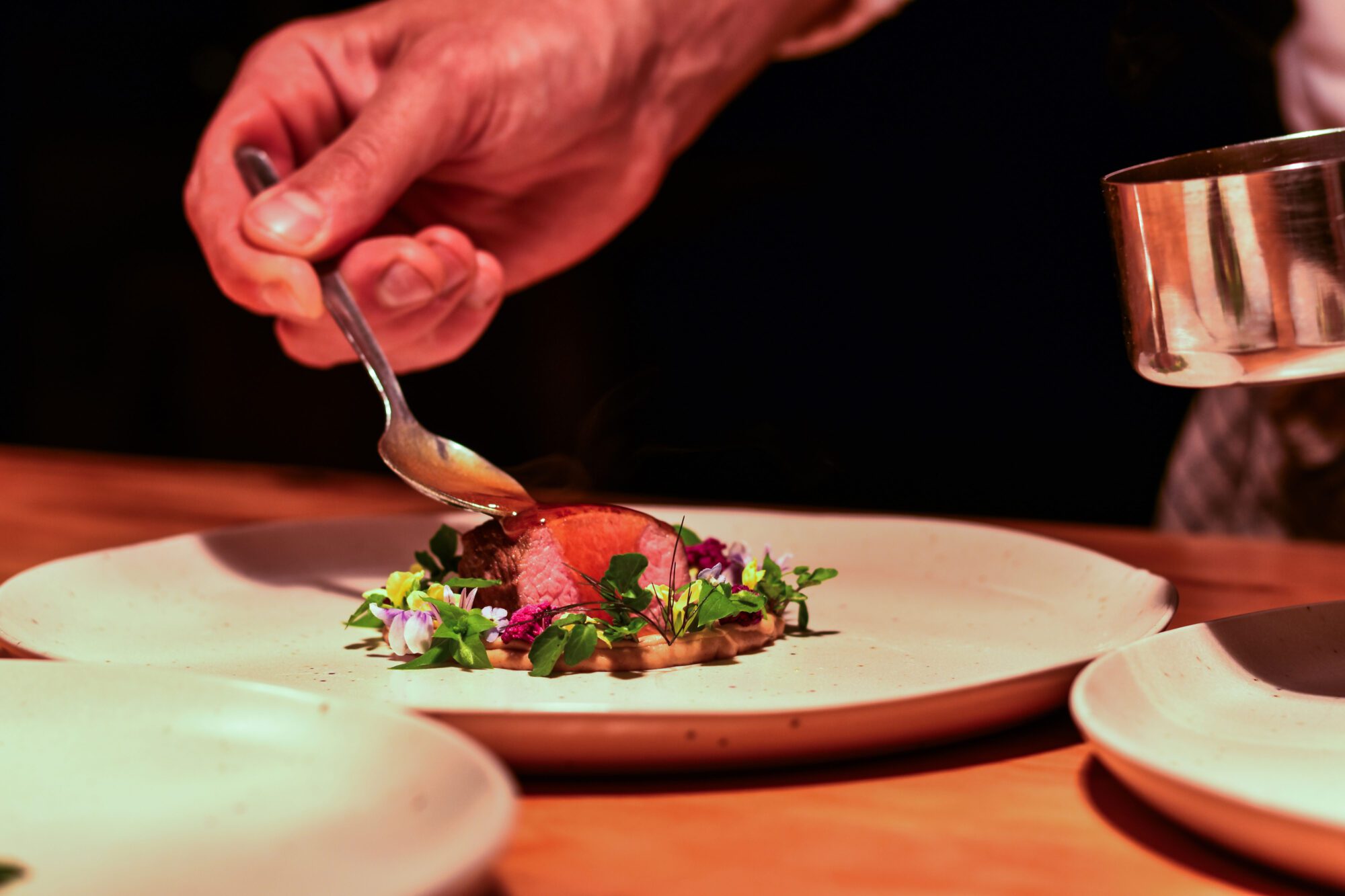
“I’ve always been curious about foraged ingredients and wild food,” says the 31-year-old chef. “In New Zealand, there is this whole world of native edibles and a lot of people doing amazing research on it. I’m only scraping the surface.” One of our dishes for the evening – silky spheres of poached mamaku, a native New Zealand fern, dressed in a creamy whey sauce – is foraged from the bush. “Originally for this dish, we used the small fern heads off the top of the mamaku branch. I realised if they’re edible, then the whole thing’s probably edible too. So we started playing with the main stem.”
Jelly-like wood ear mushrooms are also found on the property, growing off the trunks of native trees. “When it comes to ingredients you’re foraging, you’re basically on the lookout 24/7,” explains Cashmore. “It’s always important to know your spots because you don’t want to have to go out on a Saturday afternoon and hope in the 7,000 acres that you’re going to find some mushrooms. “Being in the middle of the country, there are no big suppliers. You find what you can use. That’s why we do carte blanche, because it’s ever-changing.”
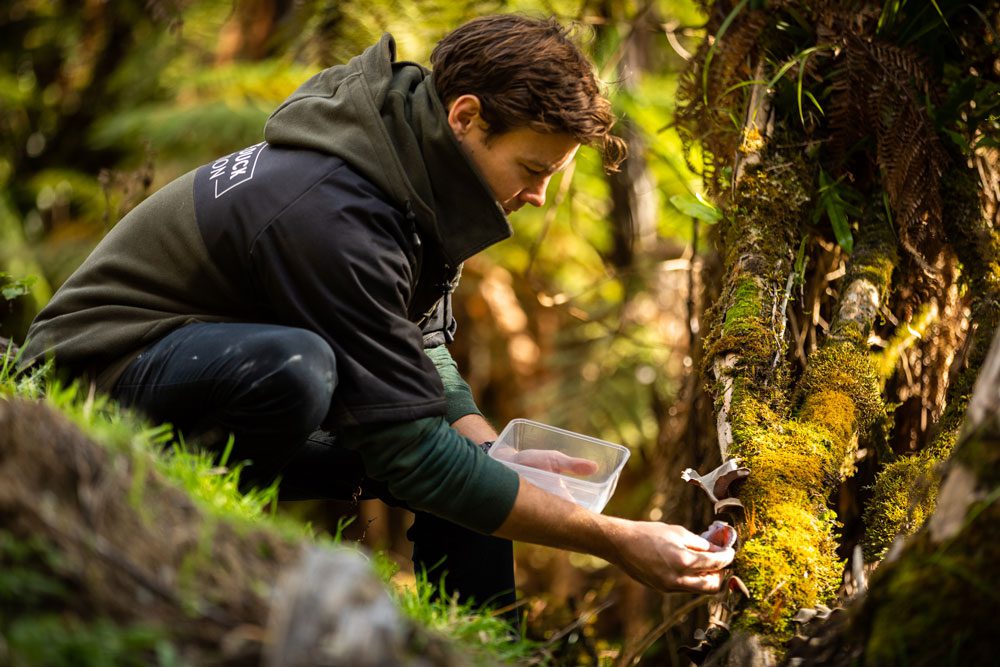
The kitchen is open, made to feel like the chef has invited you into his home where you can watch him prep, cook and plate each dish. “We like to tell guests, ‘Make yourselves at home’, because this is our home. For a long time, there’s been this stigma around fine-dining restaurants, that they’re very stiff and rigid. I still love the tradition, but done in a modern way that suits today’s generations. It’s that feeling of hospitality. We try to embody the true sense of the word.”
At one point during the dinner, we all fixate on the chefs as they meticulously place tiny greens around a tender piece of meat. The dish that arrives, lamb from the station with summer vegetables, is almost too beautiful to eat.
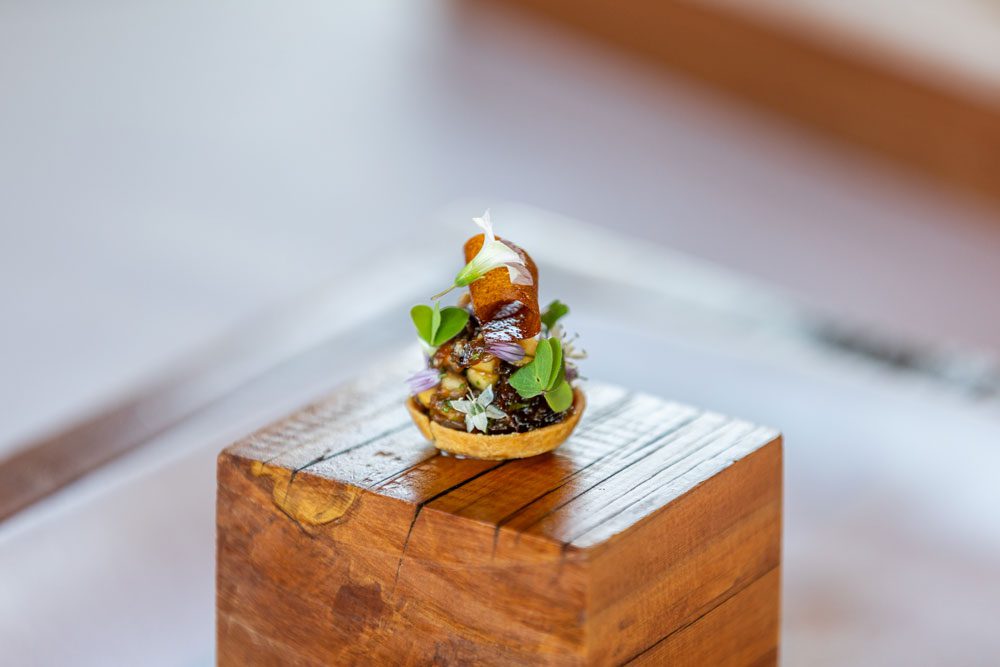
This commitment to perfection reflects one of the fundamental forces driving Cashmore’s cooking. “There’s no standing still in the restaurant game,” he says. “You can’t be complacent. You have to try and make everything better every day. Always question, ‘How can we make it better?’ That’s a very propelling way to think about everything. I believe a restaurant is only going to survive if it has progression.”
Growing up in the countryside of Staffordshire in the United Kingdom, Cashmore was just 13 years old when he got his start in kitchens, working as a pot-washer at the local pub. “There was this buzz in the atmosphere of the kitchen,” he says, recalling his first day on the job. “That really spiked my interest. That energy, excitement and passion, as well as the endurance, the hardship and hard work. I love that side of it.”
By 15, he was working as a part-time chef at the pub and, under the tutelage of its “old school” head chef, developed a mindset around working hard and getting into the best restaurants he could. He was 20 years old when he turned up at the back door of Nottingham’s Michelin-starred Restaurant Sat Bains, brazenly asking the head chef for a job. After two years at Sat Bains, he went to Belgium to work at another famous Michelin-starred restaurant, In De Wulf. “I’ve been really lucky to work with amazing mentors,” he says. “They were very hard taskmasters, but gave me the kind of grounding every chef should have.”
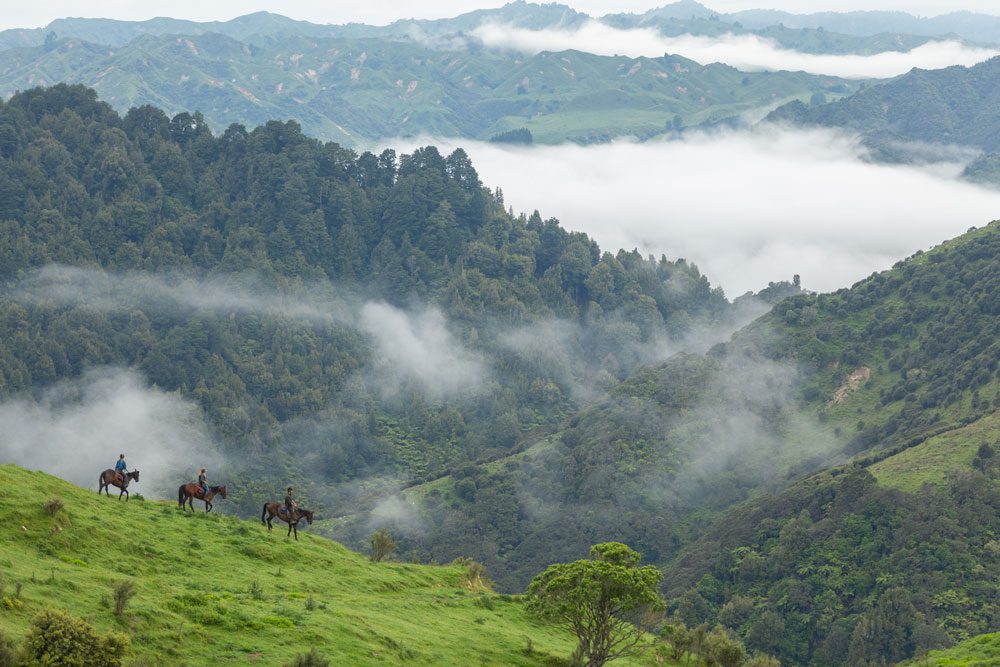
Cashmore first arrived at the Blue Duck Station as a volunteer in 2010. Situated in the Ruapehu District, on the banks of the Whanganui and Retaruke rivers, Blue Duck Station is owned by Dan Steele, an award-winning farmer with a passion for conservation, and is named after the native whio, the endangered blue duck that lives along the rivers. The property has one of the highest concentrations of whio and kiwi in New Zealand, as well as native bats, fish and weta.
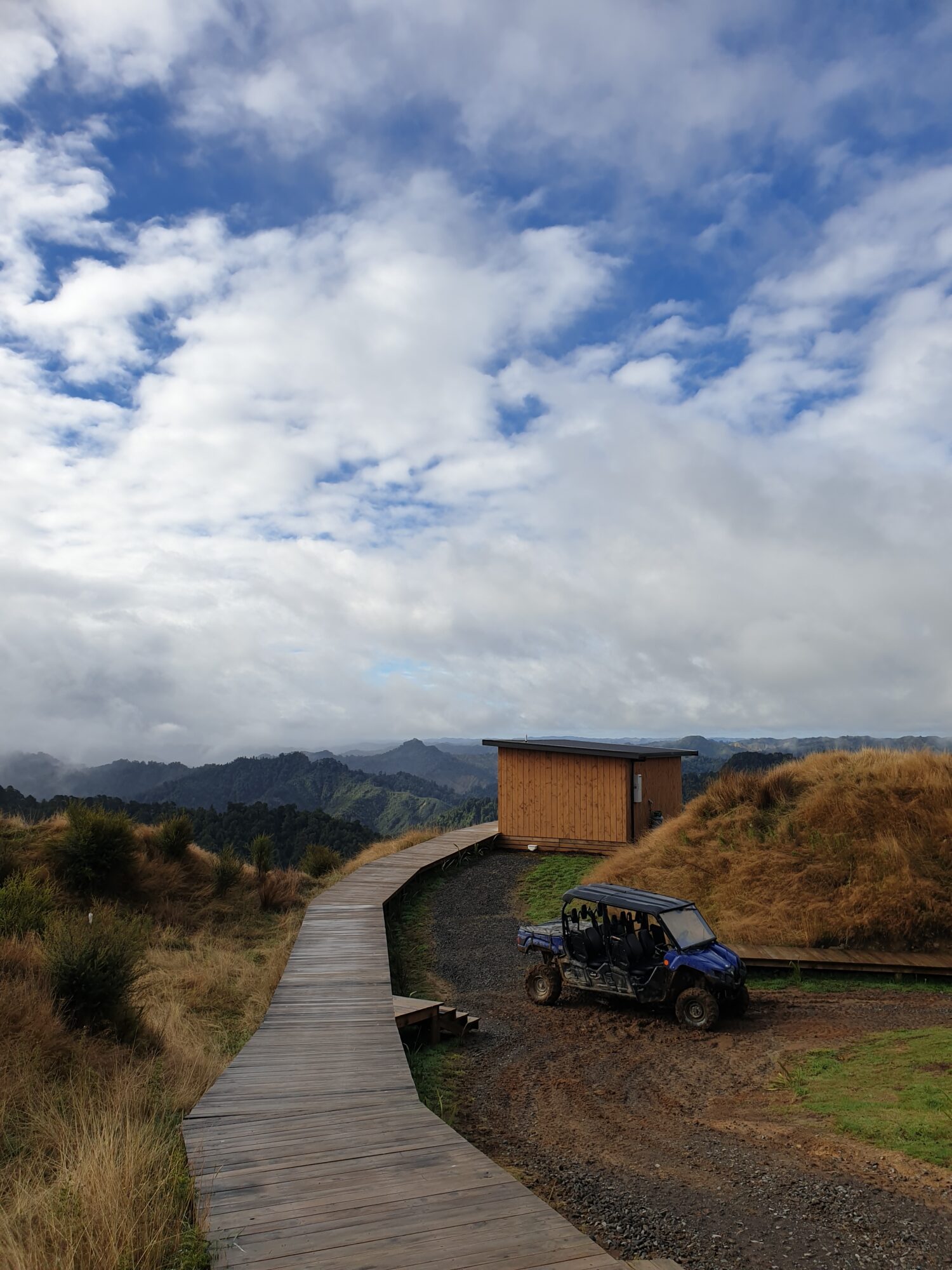
“Blue Duck Station is magical, it’s enchanting,” says Cashmore. “For most Kiwis when they come here, they’re blown away. So you can imagine what it was like for a 19-year-old kid from the UK. I spent a few days here and fell in love with the place.”
Soon, Cashmore found a job volunteering on the station taking guests on horse treks around the property. A few years later, after establishing himself as a star chef in the UK and Europe, he returned to New Zealand with the dream of opening his own restaurant. “I knew I wanted it to be in the native rainforest, but I was initially looking at places around the Waitakere Ranges in Auckland.”
One day, sitting on the banks of the Whanganui River, Cashmore and Steele started toying with the idea of building his restaurant at the Blue Duck Station. “We drove up to this high point, which we called ‘the top of the world’, and stood there for a few hours and started talking about building a small restaurant and a few cabins. All of a sudden, the fact that it was so remote and so disconnected from the world, it didn’t feel like an issue. It felt like the right thing to do in my gut. I’ve never felt so sure about anything in my life.”
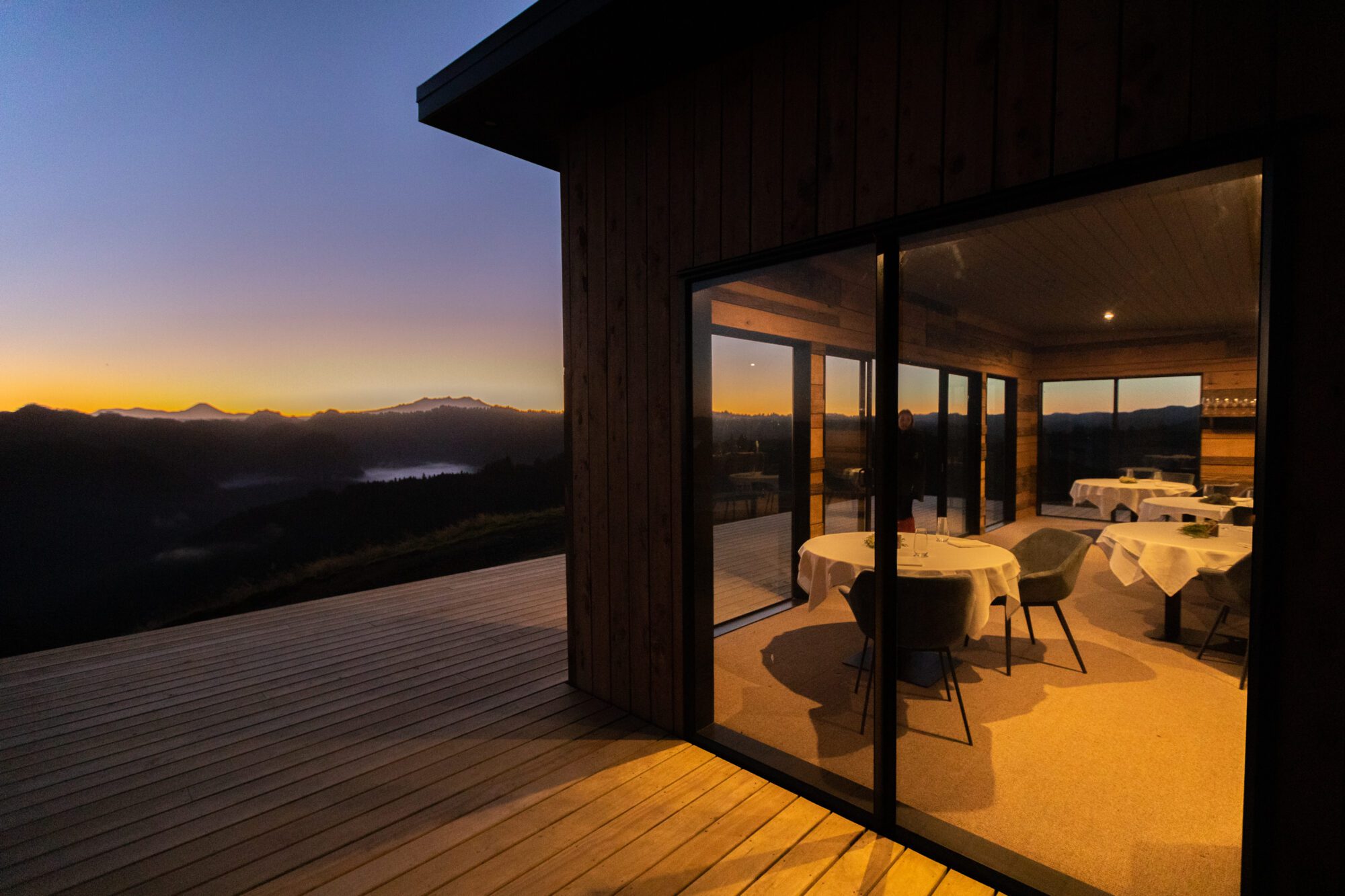
In January 2020, Cashmore, with the help of a local builder, set about building his dream destination restaurant, along with three eco-cabins where diners could stay. He says the decision to be hands-on was an obvious one, and partly inspired by his mother. “I didn’t want to look back at my life and think, all I’ve done is cook. My mum built the house that we grew up in when she was in her mid-20s. That’s a big inspiration.”
Being in such a remote location with limited access did not make the build an easy one. He recalls a particularly hairy moment when they were flying in the large glazing and joinery with a helicopter. “I’d say it was the most stressful day in [the builder] Ken’s career,” says Cashmore. “We were in a storm up here and there was strong wind and driving rain. We saw this little chopper pop up over the ridgeline with this big package of windows and doors – it was bigger than the chopper itself. There was tens of thousands of dollars just swirling around up there. Thankfully, it all got up here. I can tell you we had a stiff drink at the end of that day.”
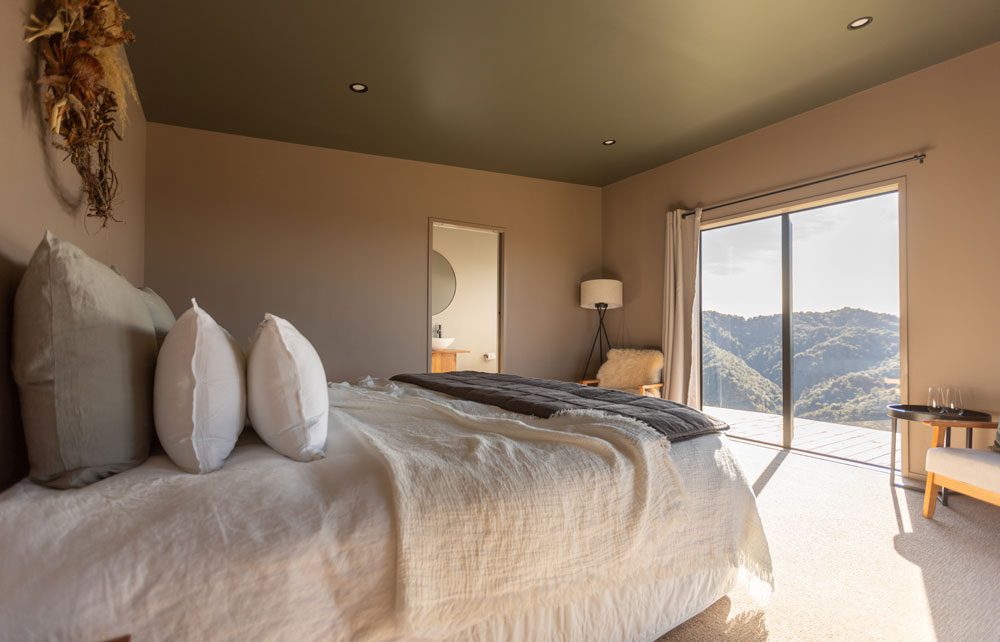
Elements of the station’s history are literally built into the place, telling stories about the ex-servicemen who tried to settle here after World War I. The wooden panels that line the dining room walls are made with timber from a 100-year-old bridge on the property. “The bridge was built around 1915. It was an amazing feat to bring all that heavy timber into the bush and build this beautiful bridge. On its 100th birthday, it collapsed into the gorge, so we pulled all the timber out of it,” says Cashmore. “It’s our duty as custodians of the land to continue to tell the history. We’ve put these walls here so that the story does not get forgotten.”
The three eco-cabins where diners stay are cosy and luxurious, and boast phenomenal views overlooking the vast hilltops. Each cabin is crafted with timber from the same old bridge and features a comfortable king-size or twin beds and modern bathrooms with rain showers.
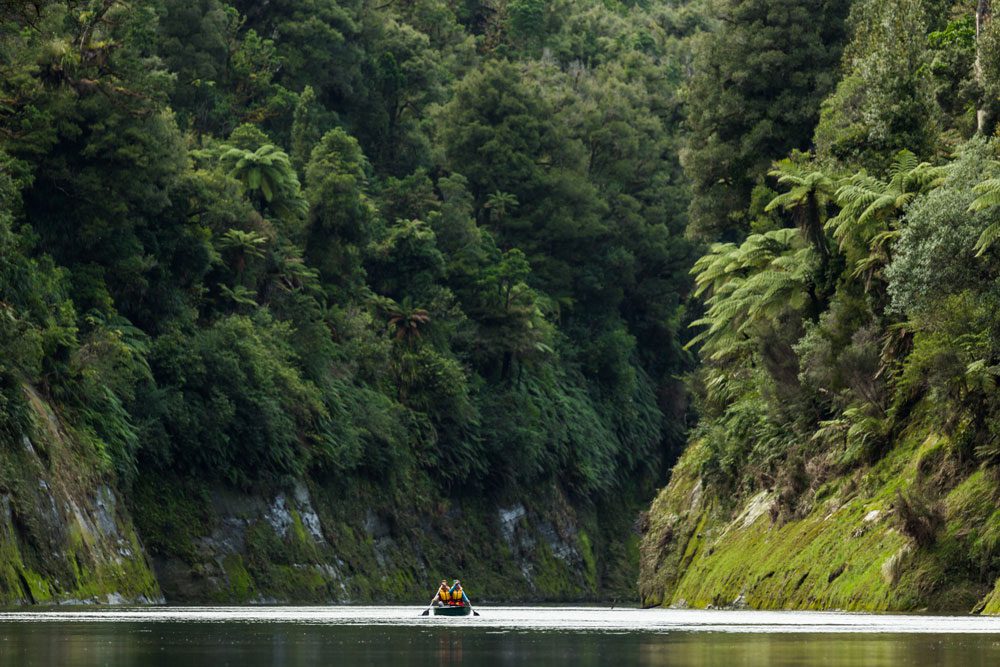
Guests are encouraged to extend their stay at the Blue Duck Station, which has accommodations ranging from private lodges to bush cabins. From there, explore the fascinating history and natural wonders of the region. Take a thrilling jet-boating journey down the Whanganui River to the famous Bridge to Nowhere, discover the beauty of the backcountry on a horse-trekking tour, or hike the many rainforest tracks to nearby waterfalls with the chance to spot native species of flora, fauna and bird life.
The Chef’s Table has been open for just over a year now and Cashmore still looks at every new day with fresh enthusiasm. “The excitement about the place only continues to grow,” he says, telling me about his plans to build gardens, more cabins, and a lounge where the team can research ingredients and develop dishes. “This is a lifetime project, and I’m happy for it to take a lifetime to get to where we’d like to be.”


